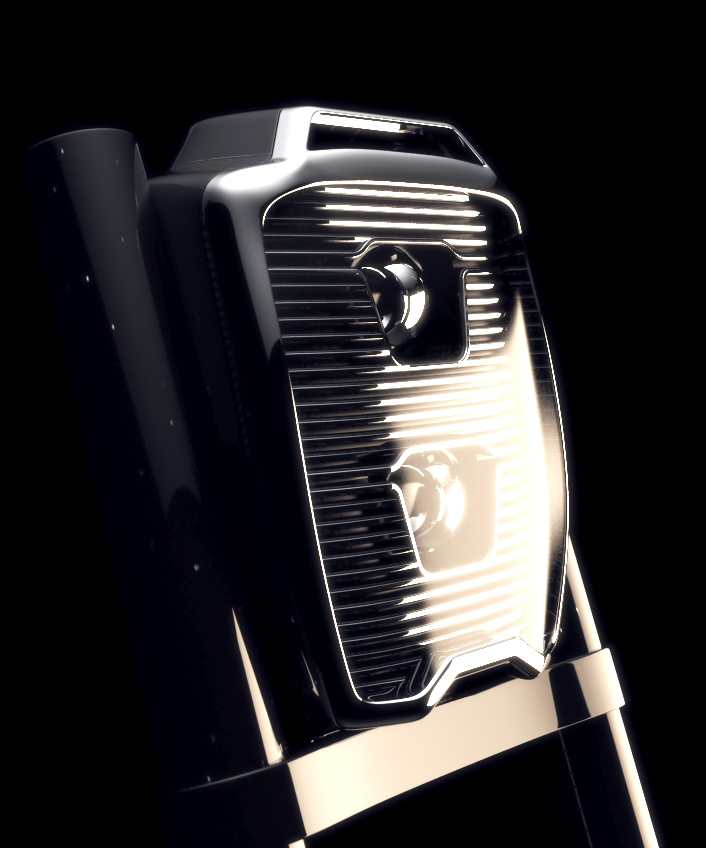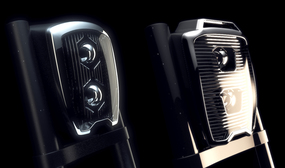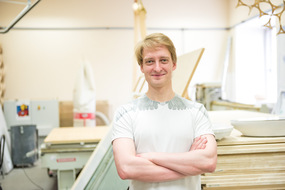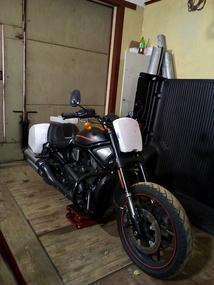Alexander Nikitin, a graduate student in the NUST MISIS master`s degree program “Materials and Technologies of Digital Production” has created a prototype for a unique motorcycle headlight, which is able to illuminate roads in darkness with a light beam angle of 120 degrees. The headlight is equipped with electronics that allows the rider to change the shape of the light beam depending on the inclination of the motorcycle, thereby reducing the risk of accidents in the dark.
Alexander Nikitin is a second year master`s degree student of Russia`s only “Materials and Technologies of Digital Production” program, created on the basis of NUST MISIS’s FabLab. In June 2017, he will be a part of the first class of the program to graduate. As a graduation project every student has to create his or her own engineering project that demonstrates a high level of proficiency in modern tool design, debugging, and the manufacturing of new products.
Alexander Nikitin has developed a prototype of the motorcycle headlight which is able to adaptively change the angle of illumination when turning. Powerful light-emitting diodes are included in the headlight design—a feature which is not typically utilized in the field—as well as reflectors and a collecting lens for the generation of a desired light beam with different motion trajectories. The headlight is equipped with a built-in shutter which changes the shape of the light beam depending on the motorcycle`s inclination.
“The idea of creating such a headlight has arisen because of the following problem: while riding a motorcycle the light beam from the headlight is cut in a special way not to blind oncoming drivers. When turning, the motorcycle is inclined, and in darkness the headlight doesn’t cast out onto the road, and visibility is lost. There is a built-in shutter in headlight, which opens depending on the motorcycle`s inclination. So, the cut edge of the light (the so-called ‘horizon’) is raised, and the light appears in a practical area for the turn. In fact, the principle of the headlight`s operation is similar to the principle applicable in a segway”, said Alexander Nikitin, the ideologist-developer and an avid motorcyclist.
The headlight`s inclination is provided through the electronic microcontroller Arduino, which allows for the parameters of the maximum angle of the headlight`s inclination and the maximum angle of the motorcycle`s inclination to be entered manually. The headlight consists of two lenses — near and far (responsible for low and high beams, respectively), powerful light-emitting diodes, a metal frame serving as a radiator for LED`s cooling, an illuminator-reflector, a frame bonding the reflector and LEDs, and the shutter, which provides the necessary light output.
Currently, there are only conditional analogues on the market — BMW, and J.W. Speakers, which produces high-adaptive headlights. BMW, one of the largest car manufacturers in the world, produces innovative headlights, but their products are suitable only for one strict model of motorcycles. The headlight developed by Nikitin is universal, so suitable for any motorcycle.
“Similar technology of swiveling headlights is implemented only in luxury car brands. It’s so nice that the same solution can be found for motorcycles. The problem of dark road sections, especially on turns, really does exist, which is why it is important to solve it both from the point of view of rider safety and comfortable driving”, — said Andrey Artischev, creator of the Livemap helmet for motorcyclists.
In the future, the developer plans to use computer vision in the manufacture of his motorcycle headlights, with which the use of a liquid-crystalline shutter will increase visibility on rainy roads.
Among Alexander Nikitin’s other developments is a luggage trunk for motorcycles, the shell of which is composed of carbon fiber and aramid fibers providing both low weight and high strength to the product.






